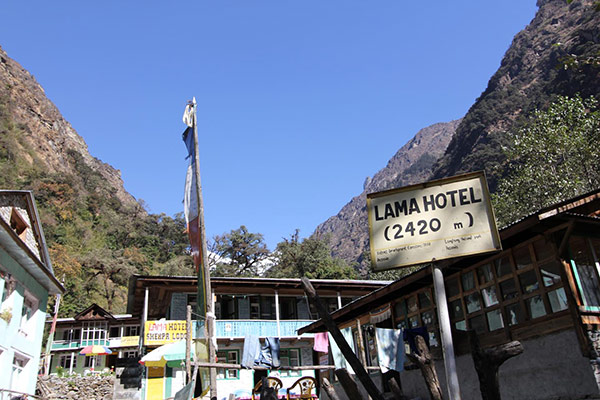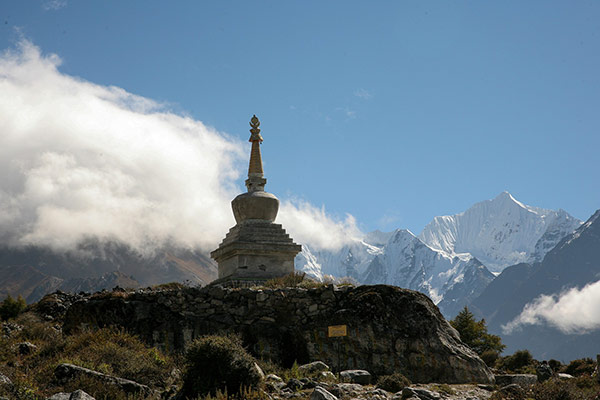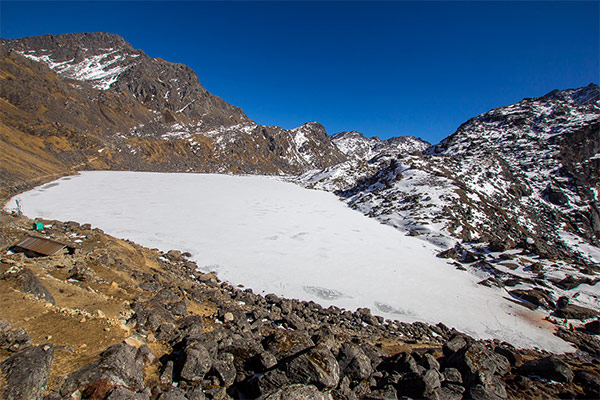- Trekking
- Expedition in Nepal
- Inbound Tours
- Outbound Tours
- About Us
- Contact us
The Langtang Region, located in the northeastern part of Nepal near the Nepal-Tibet border, is a trekking destination that’s both close to Kathmandu and easily accessible. While the Everest and Annapurna regions are the more well-known trekking destinations, the Langtang region holds its own in terms of attractions. This area offers a rich blend of natural beauty and cultural diversity, along with breathtaking views of the Himalayas.
The Langtang and Helambu regions is the second-largest protected National Park in Nepal, featuring 150 different bird species and a variety of wildlife including Red Pandas, snow leopards, wild dogs, black bears, ghoral, musk deer, and Himalayan Tahr. The lower elevations of the park boast lush plant life with Nepalese larch, birch, silver fir, and Rhododendron forests. Above the treeline, you’ll find alpine grassland meadows with the occasional juniper tree and rhododendron shrub.
The Langtang Region is predominantly inhabited by the Tamang community, who practice Tibetan Buddhism, similar to their Tibetan counterparts. Due to its proximity to the Tibetan border, you’ll notice similarities in house designs, culture, and people’s lifestyles.
The key attractions in the Langtang Region include Kynajin Gompa, a popular spiritual center; the Holy Gosainkunda Lake, of significance to both Hindus and Buddhists; Tatopani, a natural hot spring with healing properties; and the historic Rasuwa-Gadi fort on the China-Nepal border.
The primary areas of interest in the Langtang region include Langtang, Gosainkunda, Helambu, Panch Pokhari, and the Tamang heritage trail. These areas can be combined in various ways to create trekking experiences lasting from seven to 16 days.
A trek in the Langtang region is a fantastic choice for nature enthusiasts and adventurers alike. Here, you can witness awe-inspiring peaks such as Langtang Lirung, Gang Chhenpo, Naya Kangri, Langtang Ri, Kimsung, Ganesh Himal 1, Ganesh II, Ganesh III, Yala Peak, Ganjala Chuli, Langshisa Ri, Morimoto Peak, Pongen Dopku, Tembthang, Salbachum, Kyungka Ri, Chusmodo, and Dorje Lakpa.
The best times to visit this region are from October to November and from April to May when days are warm and sunny, and nights are cool. In winter, from December to March, days are clear and mild, but nights can be near freezing.
Trekking enthusiasts can choose from various routes in the region, catering to different durations and altitudes, from short and low-altitude trips to longer, high-altitude adventures. Popular trekking routes in the Langtang region include the Kyanjin Gompa trek, Tamang Heritage and Langtang Valley trek, and Langtang Gosaikunda Helambu trek. For aspiring climbers, there are opportunities to hone their skills by summiting Yala Peak and Naya Kanga.
The trails in this region are demanding, featuring long, steep climbs and descents, often taking you through dense forests, yak pastures, and offering views of glacier-covered mountains, as well as interesting villages with well-established lodges.
Desire Nepal Trekking is pleased to offer a variety of trekking packages within the Langtang region. You can explore all the trekking options listed on our website, and if you have specific preferences, please don’t hesitate to reach out to us, and we’ll do our best to tailor your trip to your needs.


